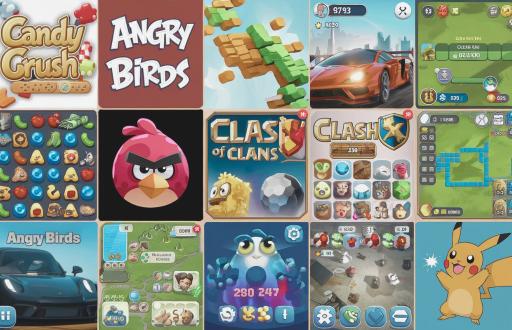Top Free Mobile Games Without Annoying Ads
In the vast universe of mobile gaming, finding quality entertainment that doesn’t bombard you with advertisements feels increasingly like searching for a digital unicorn. We’ve all been there—deeply immersed in gameplay only to have our experience shattered by an unskippable 30-second video promoting another game we’ll never download. The frustration is real, yet the mobile gaming landscape isn’t entirely dominated by ad-heavy experiences. Beneath the surface exists a treasure trove of genuinely enjoyable free games that respect both your time and your patience.
The mobile gaming industry has evolved dramatically over the past decade, shifting from predominantly paid titles to free-to-play models that rely heavily on advertising revenue. While developers certainly deserve compensation for their creative efforts, the balance has often tipped toward excessive monetization at the expense of player enjoyment. But fear not—this carefully curated list highlights exceptional games that buck this trend, offering immersive experiences without the constant interruption of advertisements.
Monument Valley Series

Few mobile games achieve the perfect harmony of artistic design and puzzle-solving brilliance quite like Monument Valley and its sequel. These architectural wonders transform impossible geometric structures into navigable pathways through optical illusions and perspective manipulation. What sets these games apart isn’t just their mind-bending puzzles but their complete absence of advertisements.
While Monument Valley technically has an upfront cost ($3.99 for the original, $4.99 for the sequel), they occasionally become available for free through various app store promotions and giveaways. When they do, they represent the gold standard of ad-free mobile gaming—no banners, no videos, no interruptions whatsoever. The developers at ustwo games chose a straightforward monetization model: pay once, play forever, with optional expansions available as separate purchases.
The ethereal soundtrack and hauntingly beautiful aesthetics create an almost meditative experience as you guide your character through impossible landscapes that fold and shift with each interaction. Each level feels like a self-contained work of interactive art rather than merely a game to be conquered.
Sky: Children of the Light
From the creators of Journey comes Sky: Children of the Light, an emotional social adventure that emphasizes cooperation and exploration. Players soar through seven dreamlike realms, collecting light, solving puzzles, and connecting with other players—all without a single advertisement disrupting the experience.
The game maintains its ad-free status through an optional season pass system and cosmetic purchases. However, these monetization elements remain remarkably unobtrusive; you can enjoy the complete core experience without spending a penny or watching a single ad. The developers at thatgamecompany have created something rare in the mobile space: a game that prioritizes artistic integrity and player experience over aggressive monetization.
The social elements shine particularly bright, allowing players to form genuine connections without words—holding hands to fly together, sharing light, or simply sitting beside a stranger watching the sunset. These moments of shared humanity stand in stark contrast to the isolating experience of most mobile games.
Genshin Impact

This open-world action RPG shattered expectations upon its release, proving that console-quality experiences could thrive on mobile platforms. Genshin Impact’s vast fantasy world of Teyvat offers hundreds of hours of exploration, combat, and story content—completely devoid of traditional advertisements.
Mihoyo, the game’s developer, employs a gacha system for character acquisition instead of ads, allowing players to spend real money on wishes that might yield rare characters or weapons. Crucially, however, this monetization approach never manifests as interruptive advertising, and the entirety of the game’s substantial content remains accessible without spending. The narrative-driven quests, breathtaking environments, and complex combat system provide tremendous value regardless of your spending habits.
The elemental combat system offers particularly satisfying depth, encouraging players to form teams with complementary abilities that trigger spectacular chain reactions when properly executed. Few free mobile games approach this level of mechanical sophistication while maintaining such a player-friendly advertising policy.
Data Wing
This hidden gem delivers a minimalist racing experience wrapped in a surprisingly engaging narrative. Data Wing’s neon-aesthetics and tight controls make for an addictive gameplay loop as you guide a tiny triangular ship through increasingly challenging courses. The game tells its story through terminal-style text exchanges between an AI and its data-carrying “wings” (your ship).
What’s truly remarkable is the game’s complete absence of monetization—no ads, no in-app purchases, nothing. The creator, Dan Vogt, developed Data Wing as a passion project, offering it to the world as a completely free experience. This level of generosity feels almost alien in today’s mobile marketplace, yet Data Wing stands as proof that artistic vision sometimes transcends commercial considerations.
The physics-based gameplay creates a unique racing experience where mastering the art of maintaining momentum becomes crucial. Sliding against walls to gain boost creates a risk-reward system that keeps even simple courses engaging through dozens of replays.
Pokémon GO
While Pokémon GO initially launched with relatively few advertisements, its longevity and continued popularity might lead you to expect an increasingly ad-heavy experience. Surprisingly, Niantic has maintained an admirably restrained approach to advertising. The occasional sponsored PokéStop or Gym exists, but these implementations feel organic rather than intrusive—they enhance rather than detract from the world exploration that makes the game special.
The game generates revenue primarily through optional purchases like remote raid passes, expanded storage, and cosmetic items. This player-friendly approach to monetization allows you to enjoy the core collecting and battling mechanics without ads interrupting your adventures. Five years after its cultural phenomenon launch, Pokémon GO remains one of the most respectful free-to-play experiences in terms of advertising implementation.
The game’s ability to encourage physical activity and community engagement also sets it apart from typical mobile experiences. Coordinating with neighbors for raid battles or exploring new areas of your city creates meaningful social connections that transcend the digital space.
Alto’s Odyssey
This atmospheric sandboarding adventure captivates with its stunning visual design and procedurally generated landscapes. The follow-up to Alto’s Adventure expands on its predecessor’s formula with new environments and mechanics while maintaining the serene, almost meditative gameplay loop that made the original so beloved.
While Alto’s Odyssey offers a free version supported by occasional advertisements, it distinguishes itself through its “Zen Mode”—a special gameplay option that removes all obstacles, points, and crucially, advertisements. This mode transforms the game into a stress-free experience focused entirely on the joy of movement and environmental appreciation.
The game’s day-night cycle and dynamic weather systems create ever-changing visual experiences across the same terrain. Watching the sun set over distant dunes while performing graceful backflips creates moments of genuine beauty rarely found in mobile gaming.
Conclusion
The mobile gaming landscape isn’t entirely dominated by aggressive advertising models, despite what casual observation might suggest. These exceptional titles demonstrate that quality experiences can thrive while respecting player attention and immersion. Whether through optional cosmetic purchases, occasional paid expansions, or simply the passion of independent developers, these games have found sustainable paths forward without resorting to constant advertisement interruptions.
As consumers, our download choices and spending habits ultimately shape the market. By supporting developers who prioritize gameplay experiences over maximizing ad revenue, we encourage more studios to adopt player-friendly monetization approaches. The next time advertisement fatigue threatens to drive you away from mobile gaming entirely, remember that gems like these exist—games that remember entertainment value should always outweigh advertising potential.
FAQ
Q: Are these games completely and permanently free?
A: Most games listed maintain their core experiences as perpetually free, though some (like Monument Valley) may only become temporarily free during promotions. Others offer optional purchases but never require spending to access their primary content.
Q: How do these developers make money without showing ads?
A: Various alternative monetization strategies exist—from cosmetic purchases and battle passes (Sky, Pokémon GO) to gacha systems for characters (Genshin Impact). Some indie developers create games as passion projects with minimal profit expectations.
Q: Do any of these games require an internet connection to play?
A: It varies significantly between titles. Genshin Impact and Pokémon GO require consistent connectivity, while games like Monument Valley and Alto’s Odyssey can be enjoyed entirely offline after initial download.
Q: Will these games remain ad-free forever?
A: While development philosophies can change over time, these particular titles have established their reputations partially on their player-friendly approaches to monetization. Significant changes would risk community backlash, making dramatic shifts unlikely.
Q: Are there similar ad-free experiences available on both iOS and Android?
A: Yes, all games mentioned are available across both major mobile platforms, though occasional exclusivity periods or feature differences may exist between versions.
Q: How frequently are these games updated with new content?
A: Update schedules vary dramatically—Genshin Impact receives major content additions approximately every six weeks, while more complete experiences like Monument Valley might only see occasional expansions or sequels rather than regular updates.






